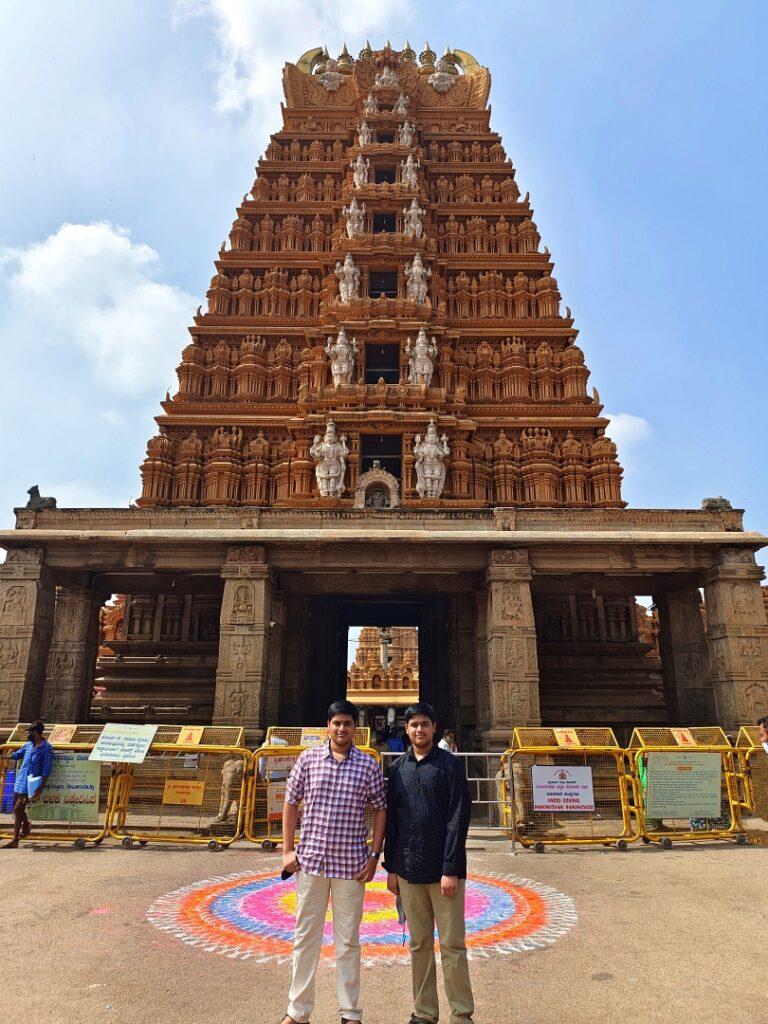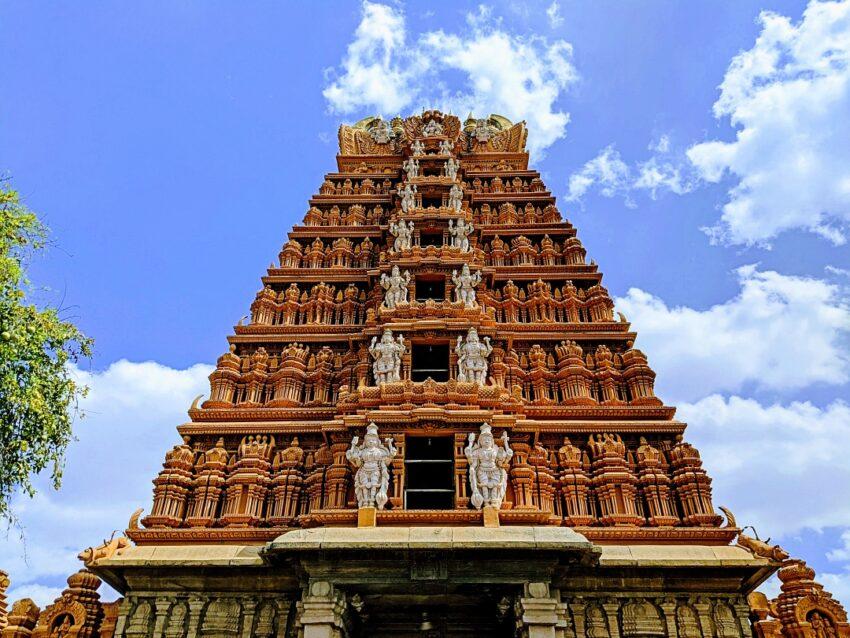The Srikanteshwara temple (also called Nanjundeshwara temple) is an ancient temple and Hindu pilgrimage center on the banks of river Kapila in Nanjangud, 20 kms from Mysore.
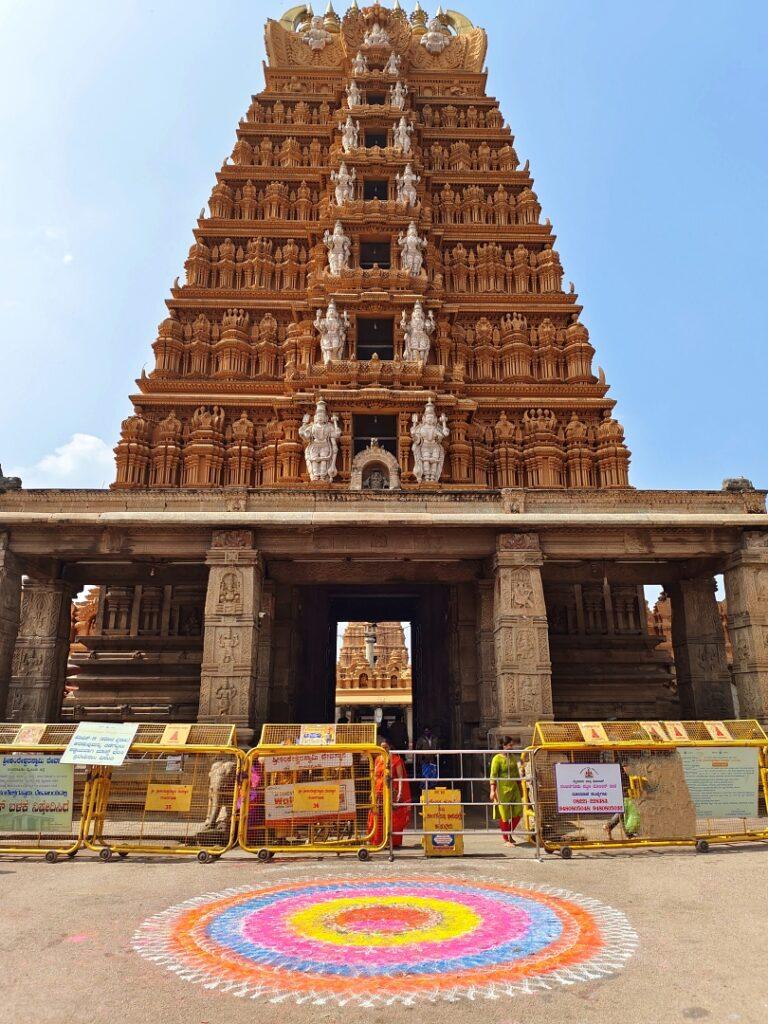
The name has its origin from Lord Shiva who consumed poison to save the Earth. “Nanju” in Kannada means poison; the name Nanjundeshwara means the “God who Drank the Poison”, a word that has its origins in the legend of the Great Churning of the Ocean of Milk; thus the town got the name ‘Nanjangud’ which means “the abode of the god Nanjundeshwara”.

This is one of the biggest temples in Karnataka with dimensions of 385×165 feet with an area of 50,000 sq.feet. The tower at the main entrance with a seven-storeys and seven gold-plated kalashas was erected in 1845 by the Queen Devajammami.
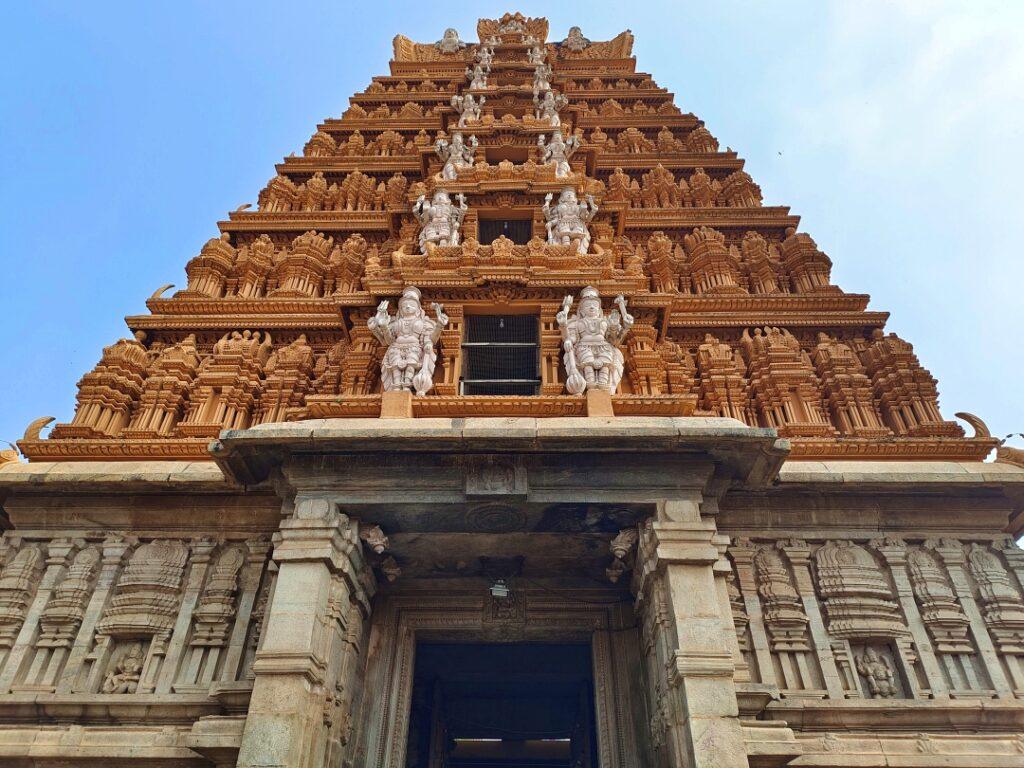
This temple was constructed first by western Ganga kings in 9th century and was later developed and extended by various Chola, Hoysala, Vijayanagara, and Wodeyar kings.
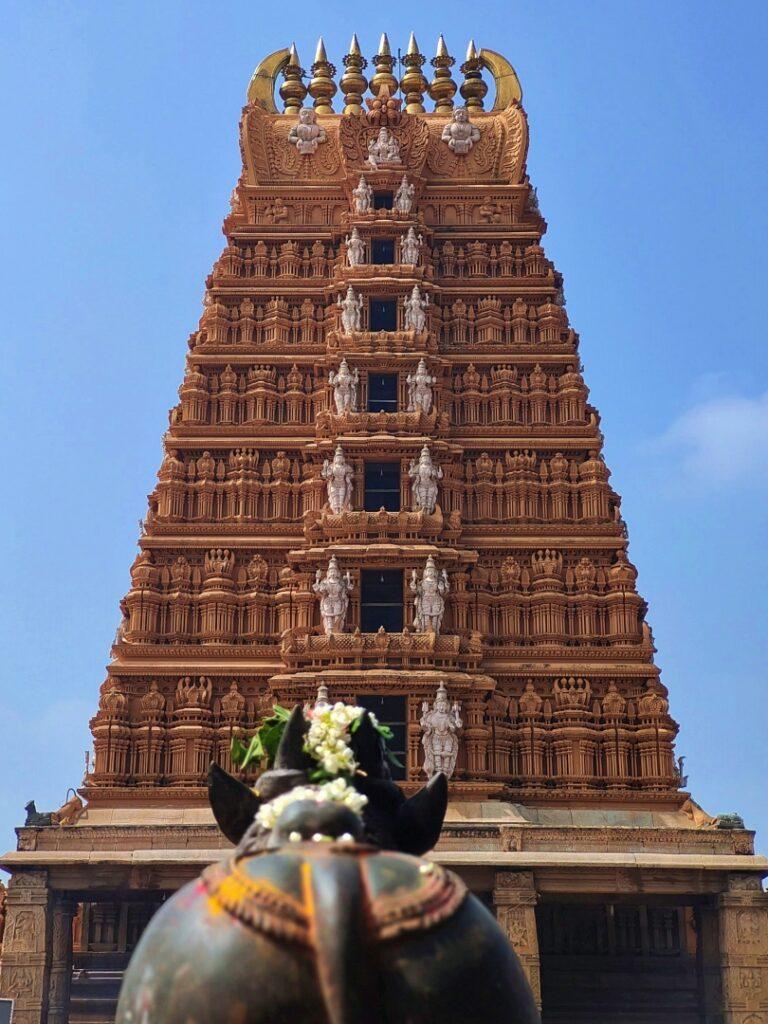
The small square “garbha griha” (inner sanctum) with cylindrical pillars was built during Ganga period. The mantapa in front of the original sanctum was done during Hoysala period in 13th century. The four stucco shikharas (small towers on shrines) on Sri Kanteshwara, Vishnu, Parvathi, and Chandikeshwara were built by the Vijayanagara kings.
This temple has one of the tallest gopuras (192 feet) in Karnataka and is famous for its more than 120 beautiful sculptures and idols depicting the various manifestations of Lord Shiva.
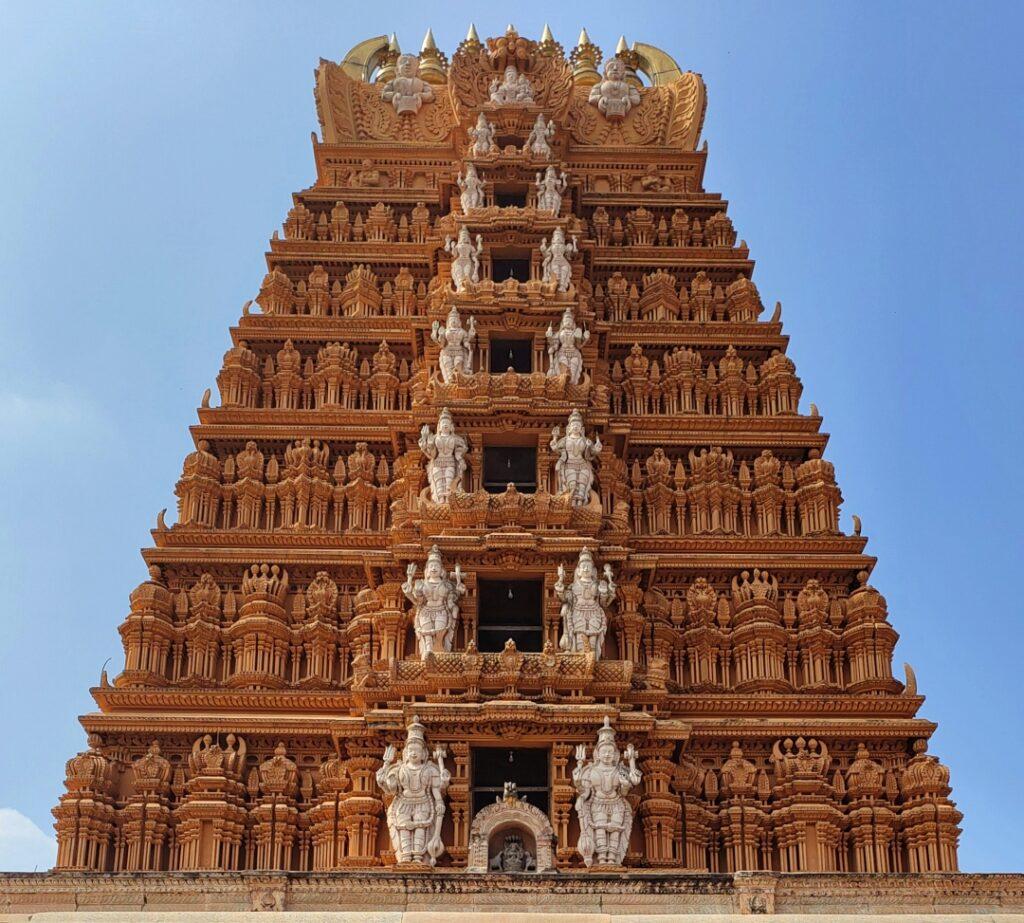
The gopura and its extensive exterior was built by Devarajammanni, the queen of the Mysore king Krishnaraja Wadiyar III.
Nearly 65 Shiva Lingas of various sizes seen in the corridor will create an impression of Kailasha and hence this temple is meaningfully called “Dakshina Kailasha”.
In the inner sanctum Srikanteshwara is seen in the form of one-meter long greenish grey-colored stone Shiva Linga.
